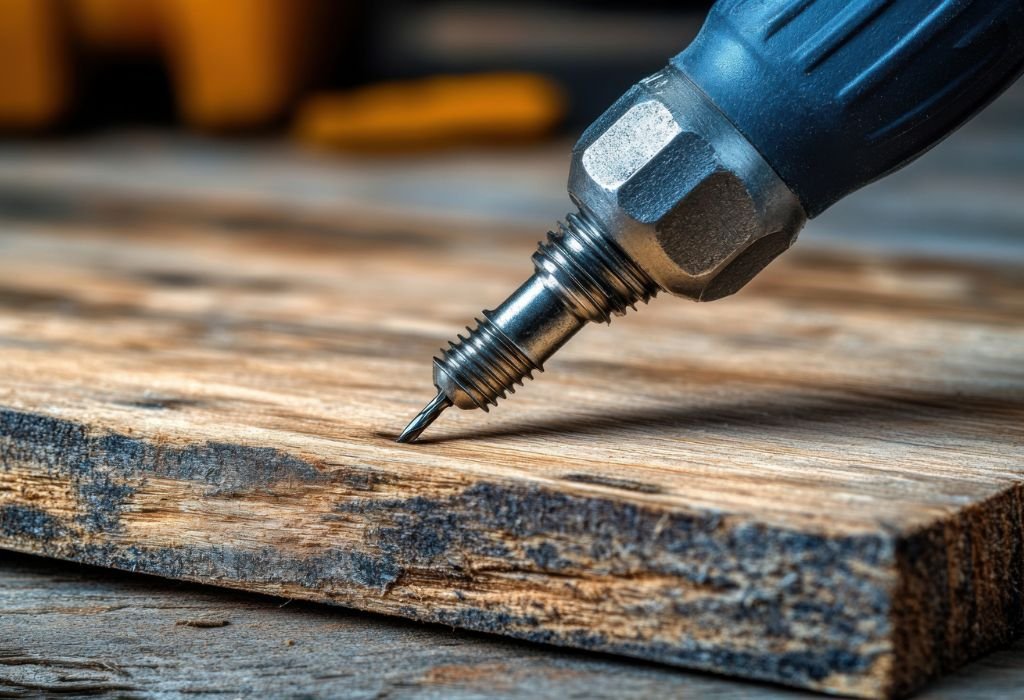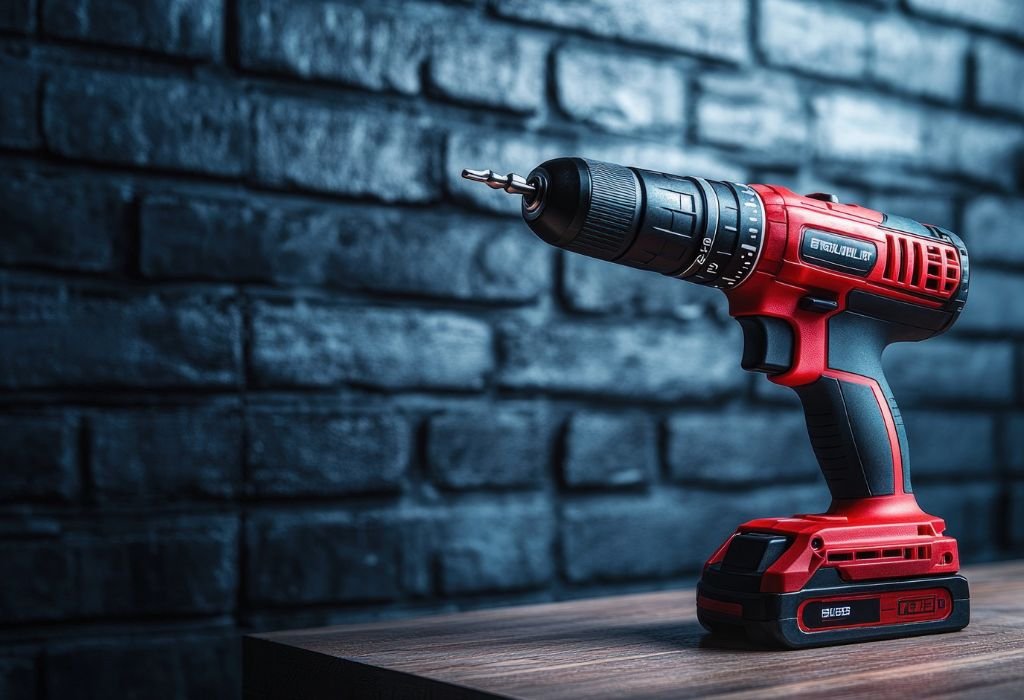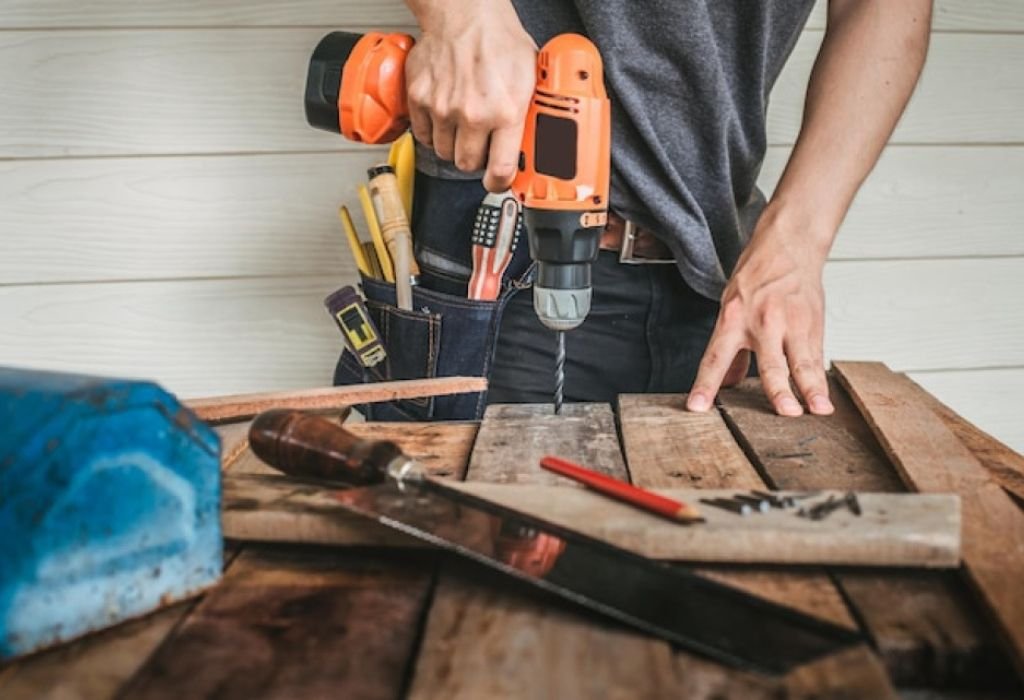Many projects are delayed because the drill bit does not lock into the impact driver correctly. A loose or poorly seated bit can slip, wobble, or even damage the material being worked on.
Impact drivers use a quick-change hex chuck that differs from the standard drill’s three-jaw chuck.
Without understanding how to pull the collar, insert the bit fully, and secure it, users risk tool damage or unsafe results.
This issue is more common than many realize. In fact, over 70% of professional contractors now use impact drivers as their primary tool for driving fasteners, replacing drills in many applications (source).
With so many people relying on them, knowing the correct method for inserting bits has become essential.
Safety is another critical reason to learn this process. The National Safety Council reports that nearly 90% of workplace eye injuries could be prevented with proper protective eyewear (source).
A bit that ejects under torque can quickly become a dangerous projectile.
Fortunately, inserting a drill bit into an impact driver is simple once the proper technique is understood.
A quick sequence—pull the collar, insert the bit, release, and check with a gentle tug—ensures a secure hold every time.
This article provides a complete, step-by-step guide on how to put a drill bit in an impact driver. It explains the essential tools and bit types, covers safety practices, offers troubleshooting tips, and shares expert advice to make drilling tasks faster, safer, and more reliable.
Tools and Bits You Need Before Starting

Using the correct tools makes inserting a drill bit into an impact driver faster and safer. The most important piece is a 1/4-inch hex-shank drill bit, which is designed to fit directly into the quick-change chuck.
For heavy-duty tasks, always choose impact-rated drill bits. These are built to withstand the high torque of impact drivers and reduce the chance of snapping during use (source).
Adapters are also useful when you need to use round-shank drill bits. A hex-to-round adapter or mini drill chuck allows these bits to work, though precision may be reduced.
A magnetic bit holder can be added for extra security and faster bit changes. This is especially helpful when working overhead or in tight spaces.
Always have safety glasses and gloves available before drilling. Proper safety gear prevents injuries caused by flying debris and bit slippage.
Can any drill bit fit an impact driver?
No, only 1/4-inch hex-shank bits fit directly. Other bits require an adapter.
What is an impact-rated bit?
It is a bit designed to handle the hammering force of an impact driver without breaking.
Do step bits work in impact drivers?
Yes, as long as they have a 1/4-inch hex shank and are impact-rated.
Is a magnetic bit holder required?
It is optional but useful for speed and better retention in awkward positions.
Do adapters reduce accuracy?
Yes, a little. They can introduce slight wobble compared to direct-fit hex bits.
Step-by-Step — How to Put a Drill Bit in an Impact Driver
The quick-change mechanism makes it easy to insert bits if the sequence is followed. Pull the collar on the chuck, slide in the hex-shank bit until it seats fully, and then release the collar.
Always finish with a gentle tug test to confirm the bit is locked in place. This prevents slips and ensures reliable operation under load.
Visualize the Mechanism (Ball Detent + Sleeve)
Inside the chuck, a small ball detent locks into the groove of the hex shank. The sleeve or collar moves this ball in and out to secure or release the bit.
When the bit clicks into place, the detent has engaged, and the tool is ready for use.
Should the collar be pulled to insert the bit?
Yes, pulling the collar guarantees the bit seats correctly, even if push-insertion works on some models.
How far should the bit go in?
The bit must be fully inserted until it clicks and passes the tug test.
Why does the bit wobble?
It often means the bit is not seated properly or the collet is worn.
What PPE is recommended?
Always use safety glasses, as bits can eject small chips under torque.
Can bits be changed one-handed?
Yes, many models allow this once the user masters the quick-change motion.
Using Round-Shank Drill Bits with an Impact Driver (Adapters)
Impact drivers are built for hex-shank bits, but adapters make it possible to use standard round-shank drill bits. A hex-to-round adapter or mini drill chuck attaches directly to the impact driver’s collet.
This method is helpful when only traditional bits are available, though accuracy and stability are lower than with a regular drill.
Is drilling metal with an adapter okay?
Yes, but only for light-duty holes, since stability is reduced.
Will an adapter void warranties?
Most brands allow it, but check your manual to be safe.
Which adapter size is standard?
The most common is a 1/4-inch hex shank to a small 3-jaw chuck.
Do adapters affect torque?
Yes, slightly. They may introduce more vibration at high speeds.
Are keyed or keyless mini chucks better?
Keyless is quicker, while keyed chucks grip more securely.
Choosing the Right Drill Bit for an Impact Driver
Not every bit is suitable for the high torque of an impact driver. Always select impact-rated options with a 1/4-inch hex shank.
Material choice matters: HSS is good for wood and light metals, cobalt for harder steels, and titanium-coated bits for long life and reduced heat.
Can a flat spade bit be used?
Yes, if it is labeled impact-rated with a hex shank.
What hex size do impact drivers take?
The universal size is 1/4-inch hex.
Are masonry bits available?
Yes, some hex-shank masonry bits exist for light concrete and brick drilling.
What about SDS bits?
SDS shanks are not compatible with impact drivers.
Do titanium coatings help?
Yes, they reduce wear and heat when drilling metals.
Impact Driver vs Drill — When to Drill with Which

Impact drivers excel at driving screws and bolts with high torque. Drills are better for precision hole-making due to their three-jaw chuck and variable clutch.
For frequent or accurate drilling, a drill/driver remains the better choice. Use the impact driver mainly when speed and power are more important than precision.
Can an impact driver replace a drill?
Not entirely; it lacks precision and clutch control.
Why no clutch on an impact driver?
The percussive mechanism takes over when resistance is met.
What about hammer drills?
Hammer drills are better for masonry and concrete with SDS bits.
Does an impact driver have variable speed?
Yes, but it offers fewer fine adjustments than a drill.
Are impact-rated drill bits mandatory?
Yes, to avoid breakage under high torque.
Safety Checks and Best Practices Before Drilling
Always wear safety glasses before starting work. Most eye injuries happen during simple drilling tasks and can be prevented.
Clamp or secure the material to avoid slipping. Start at a lower speed and gradually increase to maintain control.
Why insist on safety glasses?
Because nearly 90% of eye injuries are preventable with them.
How to avoid walking bits?
Mark with a center punch and start slowly.
What RPM for metal?
Use slower speeds with lubrication to prevent overheating.
Pilot holes needed?
Yes, especially for hardwood and thick metal.
Gloves or no gloves?
Avoid loose gloves, which can catch in rotating tools.
Troubleshooting Bit Insertion and Retention
Sometimes bits get stuck, fall out, or wobble. These problems usually relate to the collet, the sleeve, or the quality of the bit.
Regular inspection and cleaning often solve most issues. A damaged detent spring or worn collet may require replacement.
Bit won’t eject — what now?
Lubricate the collet, move the sleeve, and pull carefully with pliers.
Bits keep dropping — cause?
A weak detent spring or incorrect bit shank.
Collet repair DIY?
Yes, many models allow spring and ball replacement.
Push-to-insert not working?
Use the manual collar pull to seat the bit.
Why do some bits wobble more?
Low-quality or bent shanks cause instability.
Maintenance to Extend Collet and Bit Life
Dust and debris quickly wear down the chuck and bits. Light lubrication and cleaning after heavy use extend tool life.
Store bits in a dry box to prevent rust, which can jam the collet and cause failure.
How often to oil the collet?
After dusty work or monthly in heavy use.
Signs the holder is done?
When bits eject unexpectedly or the sleeve sticks.
Magnetic holders affect wear?
No, they only improve handling.
Do impact-rated bits last longer?
Yes, they are built to resist torsional stress.
Best storage practice?
Keep bits dry and separated by type.
Quick Reference — How to Put a Drill Bit in an Impact Driver

Follow these simple steps every time: pull the collar, insert the bit, release the collar, and perform the tug test. Always wear eye protection.
This checklist ensures the bit stays locked and the work proceeds smoothly.
Fastest way to swap bits?
Use a quick-change holder with pre-loaded bits.
Can impact bits go in a drill?
Yes, they are backward compatible.
What if drilling many holes?
Use a standard drill for speed and accuracy.
Do all brands work the same?
Yes, most use the same mechanism.
Any brand-specific quirks?
Some models require a collar pull, others allow push-in insertion.
Conclusion
Inserting a drill bit into an impact driver is a simple process once the mechanism is understood. Pull the collar, insert the hex shank, release, and test for a secure fit.
Using the correct bits, practicing safety, and maintaining your tool will make every project safer and more efficient. Always remember to protect your eyes and choose impact-rated bits for best results.

I’m John F. Nicholas, the founder, lead writer, and drill enthusiast behind 101drill.com. With years of hands-on experience in power tools and DIY projects, I created this platform to share practical knowledge, expert tips, and real-world insights to help others master the art of drilling.
